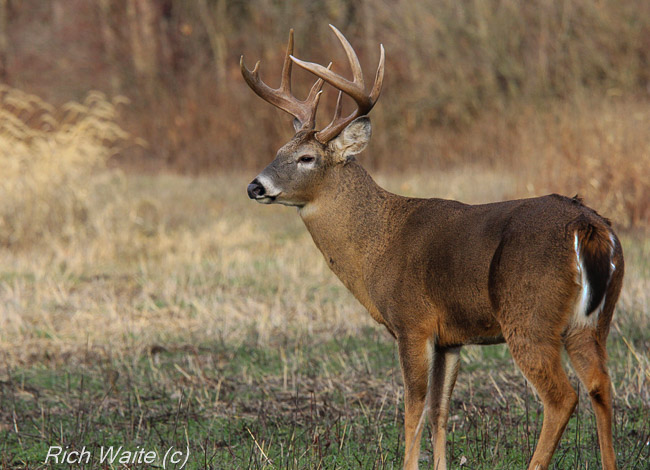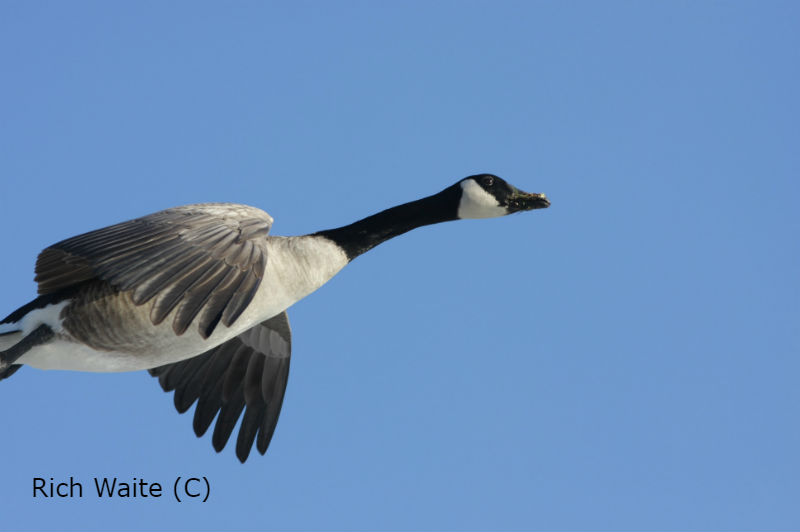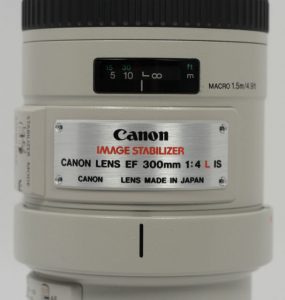The early morning rays of sunlight sprinkling through the oak and hickory treetops began to reveal what it was that I had been straining to see. Straining to see for the last half hour or so. Noise in the dark thicket of young oaks and bitternut hickory pole timber only about 60- yards distant. Faint noise. Muffled noise. Hunters know the sound. Leaves stirring faintly by multiple footsteps, moving with a rhythm and a seemingly steady purpose, yet always circling back to where they started. Deer moving and milling about the thicket after coming back from the nearby grain fields.
That was my guess anyway. But was it two deer? Three deer? Maybe more?
It wasn’t long before a whitetail doe eased out and into a little opening in front of me. I fired multiple times immediately – six or seven shots within just a couple of seconds.
Then, suddenly, a buck appeared, like a ghost, out of the edge of the darkness and into the light, right behind the doe, looking squarely at me, eye’s piercing me like the sharpest arrow. Like all giant bucks. He knew all along where I was. At least it sure seemed like he did. But, it didn’t matter. It was too late for him.
Like NBA marksman, Clay Thompson, my arms were already raised and ready for the shot. He didn’t know I was looking at him through my camera lens. Click, click, click, click…
I got him! The wait — in the cold blind — had definitely been worth it.
Wew..I had to stop and catch my breath. My heart and adrenaline, surging, even though I was just sitting there.
Easy does it, I told myself. I got him! That’s how it goes when hunting with a camera. Sometimes, that is. When you get lucky!
Just like when hunting with a bow or gun, with wildlife photography, you work at it and when you are prepared luck seems to come easier.
And, I can assure you this, hunting with a camera is lots of fun. Great fun, for sure. Yet, for the life of me, I don’t fully understand why more people aren’t doing it? Sure, I get the fact that you don’t get to bring back any meat when hunting with a camera. No doubt about that. Not unless you stop at the grocery store on the way home, that is. And that is the main reason why I hunt with a bow or gun, to bring back high-quality low fat and super healthy venison or other game for the family to enjoy. That doesn’t happen when I hunt with my camera.
So why do it?
Some people don’t seem to get it. Even people whom I would think would get it, like other hunters that I know and wildlife professionals. In fact, just this past fall I was talking to a park ranger and he just asked me point-blank why take wildlife pictures? And, what do you do with the pictures?

Nothing like calling in predators in the winter! It’s fun hunting them with bow or gun. But it’s also great bringing home images for the wall with the camera!
Before I talk about that let me first say that when I go hunting with a bow or gun a HUGE reason lies in the thrill of the chase.
Trying to outwit something on their own turf is addicting (and that is also why I love to fish). When I hunt the fields and forests around me with a camera, I can still do this. Plus, with camera, I can always bring something home – memories in the form of pictures. Now, for sure, they aren’t always great pictures. But I get to bring back pictures of the animals I see to share with friends and family, nonetheless. This is huge. Ring enough one up for wildlife photography!
It is awesome to be able to share the experiences that I have in the field with friends and loved ones who were not there. When I hunt traditionally, that is, with bow or gun, I often don’t bring home anything to share but invisible stories. I don’t always bring home meat that’s for sure!
And, maybe because I am getting older, it’s the sharing of the experience that is really deeply and genuinely valued and is so rewarding. The pictures I bring home every time I come back from “camera hunting” let me do that in a great visual fashion that people don’t have to imagine or believe. Now, I’ve got proof that really did encounter that monster buck! Much of the “trying to outwit something” reason that I hunt or fish, is a reason involving challenge. That is a huge part of why I go hunting — for the challenge of the endeavor itself – trying to bag that animal and/or even the challenge of the process (dealing with the weather, example). This is all kept as part of the camera hunting endeavor as well. You don’t lose these things with camera hunting. In fact, one could argue that hunting with a camera is even more challenging. At least, it can be, at times!
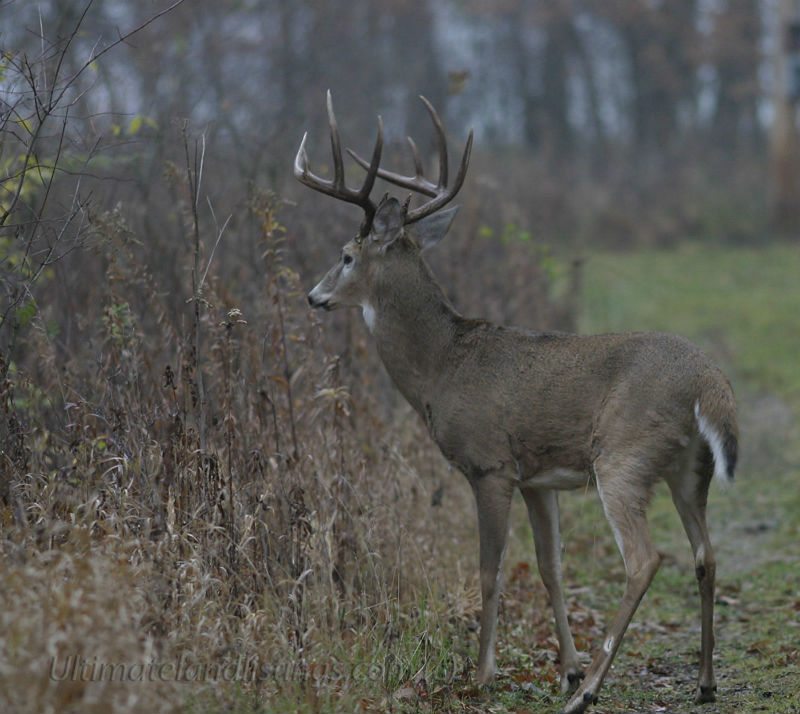
This nice whitetail was out and about one November morning checking scrapes when I shot him with my Canon!
Let me quickly qualify that last statement – camera hunting can be as challenging as you make it because there is the constant challenge of creating a higher quality image than the previous one. That is a huge reason why I love camera hunting too. The challenge of trying to create not just a technically good image but a technically or even artistically great one!
And think of this benefit when hunting with a camera – there are NO SEASONS. You can “hunt” deer any time of year you wish. You say you’d like to go “hunting” month before the season opens – no big deal, go right ahead! And, using a camera, you can now “hunt” most wildlife refuges, national and state parks! Additionally, you don’t have any licensing expenses to deal with! Obviously, the door opens way up with great options when you pick up a camera to hunt with!
I realize that many folks just don’t think it will be “the same” as when hunting with a bow or gun. That somehow the “thrill” just won’t be there.
I think that is something you would have to decide for yourself. I can tell you that it is just what you make it out to be. Photographs, like fingerprints, are all different. And it isn’t easy producing great images on a regular basis– despite today’s fantastic equipment. In fact, one “keeper” for every half dozen shots is sort of typical. And, getting one “wall hanger” type of image might take you a few hundred shots. Photography isn’t as simple as pointing and shooting. At least, getting great images on a regular basis isn’t about that. But that is why I like it. Again it’s that challenge. If it was easy it would be boring and it would be hard to find the satisfaction of doing it. The thrill of accomplishment – finally being able to get a great image after all the lighting and setup challenges definitely exist. I think that is what allot of people may think. That hunting animals with a camera instead of with a bow or gun would be boring and maybe not satisfying. Again, it’s all about what you make of it. But I definitely don’t find that to be true at all. But wildlife photography is what you want it to be. If you like to push the limits, if you are like many hunters and love the challenges in the field, then there is a good bet you might also like the challenges of getting great images of the animals you pursue with a camera in hand. If you’re one that likes to push for things. You can push for an unlimited amount of challenge growth with wildlife photography.
And you are already on step 8 on a scale of 1-10 on what it takes to get that great image if you are a hunter – that is, getting to know your subject and how to get close to your subject on a regular basis. As a hunter you already know how to accomplish this.
I love shooting waterfowl with a camera (I love hunting them as well). But when the season is over and there are still lots of birds around — might as well go bring back some images to share or for the wall!
Do you know how to Shoot a Camera?
The type of camera I’m talking about using here is a DSLR (Digital Single Lens Reflex).
You know, the great big cameras those guys hanging around the end zones and sidelines of sporting events have! You know the ones. I won’t get into how to use a DSLR here because I don’t have the space for that. You’ll have to do some Internet browsing for that. There are guides and books on that subject widely available. If you’ve never used one, then it’ll take a little bit of study. Not that much, though. Rest assured, if I can use one so can you! If you want to get out there and do some wildlife photography, then I’m sure you’ll probably be excited to spend a little bit of time learning the basics of the camera itself. You can do it and it’s worth learning.
Probably the single biggest setting that I use in the field is called aperture-priority mode. This is where you get to decide how much focus you want for the photograph (example: just the eye’s and face or more corner-to-corner?). This setting lets you be the guide and the camera does the rest. It’s really not too hard!
Camera brands: There are several brands. The top brands today, as you may already know, are Canon, Nikon and Sony (in no particular order). I use Canon gear but I have also used Nikon and both make top quality gear. Sony does as well. I’ll talk about Canon gear in this post only because that is what I’m most familiar with (not because they are better than any other brand. Although, I must say I love my Canon’s!)
keep in mind that I am not a wildlife photography pro! I am just a guy, maybe like you, who has some knowledge of photography and has a deep interest in hunting. I’m just a guy combining the two!
The reason I choose Canon is because I invested in one of their cameras a while back and then bought a couple of their lenses. Once I got vested into them, it was no turning back. And I haven’t been disappointed at all. They have a superb array of other items like lenses, teleconverters, etc., for the type of shooting that I like to do, which is, of course, wildlife.
If you watch a sporting event, you will see allot of big white lenses – these are canon pro lenses. I would say most pro sporting photographers shoot one of these three systems – and I would say more pro’s shoot Canon than anything else, followed by closely by Nikon.
Again, several companies make great gear and pro quality systems. I’m no pro that’s for sure but I just got into the Canon system a while back and bought some of their lenses so I’ve been sticking with them. Had I bought Nikon or Sony stuff previously I probably would be sticking with them. It gets expensive to keep switching around once you invest in some of the gear of one brand.
Something to remember is that what you are really buying when it comes to acquiring wildlife photography gear, is not just a camera but a system that goes with it. Lenses are at the top of the list, of course, and it’s good advice to get good lenses and don’t skimp on quality here. The route I’ve chosen to go involving price point is sort of right down the middle. My cameras are basically “serious amateur” level and I try to find the best deals on the highest rated lenses that I can find. Again…one could go on and on about this. But I don’t have
The route I’ve chosen to go involving price point is sort of right down the middle. My cameras are basically “serious amateur” level and I try to find the best deals on the highest rated lenses that I can find.
Again…one could go on and on about this, but I don’t have space here to do that. You’ll want to read up on top choices for wildlife photography. The Internet is full of information on that. It’s all about what system offers the best choices for the type of shooting that you will be doing. There is a ton of information out there discussing the pros and cons of the different camera systems available today.
Type of Equipment: I like a camera that has a quiet shutter and one with great focus ability in low light; and, produces one that produces high-quality images with low grain, when doing deer photography, in low light conditions. These are big demands.
The Canon 6D fills these needs perfectly.
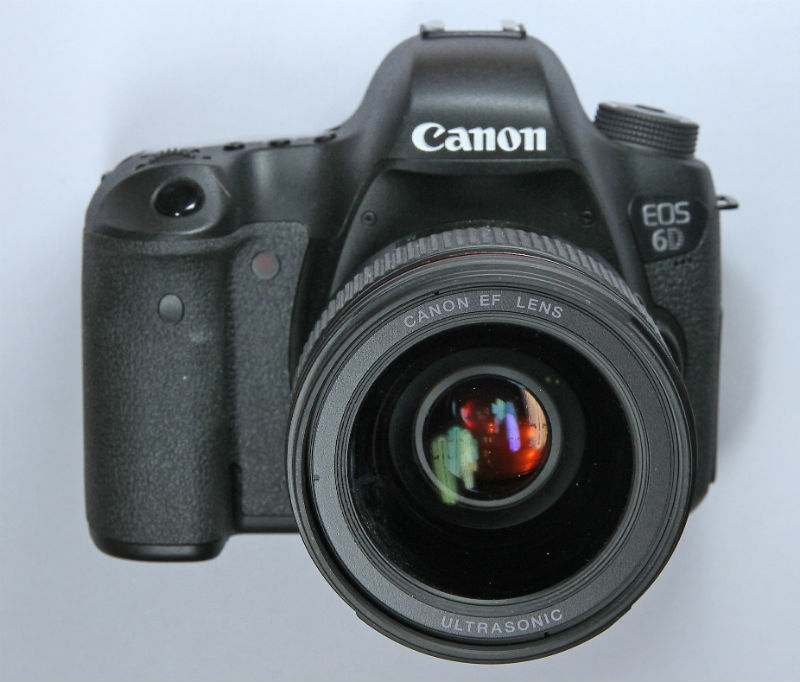
The Canon EOS 6D does a great job in low-light and with high ISO settings. It has a pretty quiet shutter drive, too. This makes it great for shooting wildlife in low-light conditions at close range.
The Canon 6D is not a cheap camera, by any means. But it isn’t in outer-space, price-wise either (about $1500 for the body only currently on Amazon). This camera sort of lies in the middle-end of the spectrum and would be classified as a “serious or semi-pro” type camera. It’ll work hard for you for years and years of service so long as it’s cared for. And the 6D will is capable of producing images that could easily go on the cover of any magazine or that could be enlarged to poster size for that office wall!
With this, I’ll usually carry a 70-200 f/4 IS mm zoom ($599 on Amazon) with a 1.4x II extender ($195 on Amazon) and a 300 mm f/4 IS lens ($1350.00 on Amazon) that uses the same converter. However — if I were just getting into wildlife photography at this level I would get the Canon 100-400 mm f/4.5-5.6 IS II zoom lens (about $2,050 on Amazon). I would get this lens instead of getting the other two previously mentioned lenses. Why? Because this one lens covers the same bases as the other two and also gives you 100 mm longer reach. This is a new lens but has glowing reviews and is a pro-grade lens in all respects. The Canon 6D has been around for a few years now but it still is a very capable camera that produces pro-quality results (with practice). The Canon 6D works great for most whitetail photography and it’s auto-focus system and shutter speed is certainly adequate to get great shots of deer running or jumping a fence.
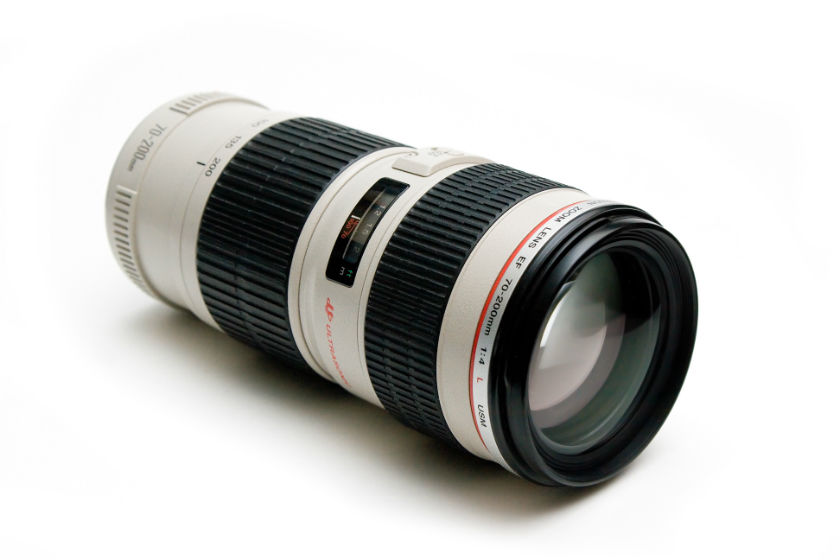
The Canon 70-200 f/4 is a great all-around nature and wildlife lens for larger subjects that aren’t too far off — say 30 yards or so with deer. I prefer the IS version which makes it easier to hand-hold and get sharp images, especially in low light.
There are other cheaper alternatives for getting good lenses — choices from Sigma and Tamron, for example, that cover the same focal lengths as those just mentioned will get the same job done at a fraction of the cost. You might want to do some research on these and look at some lens reviews. These companies, and others make some top-notch glass but, generally, tend to fall shy of the quality that a camera company puts out on their own lenses. I’ve had one Sigma lens and it was built like a tank and took some great photos. I don’t think the brightness and overall “pop” of the images it produced were as good as my Canon glass, however. With technology changing so fast, the margin of quality between the lenses that Canon, Nikon, Sony, etc., put out and some of the third-party lenses makers just mentioned is narrowing greatly. In some cases, there may be no difference in quality. Again…you may want to do your own research on this before buying a lens.
Back to the camera: The Canon 6D has been around for a few years now but it still is a very capable camera that produces pro-quality results (with practice). It works great for most whitetail photography and it’s auto-focus system and shutter speed is certainly adequate to get great shots of deer running or jumping a fence.
The 6D is a full-frame camera with no built in “lens multiplier” effect. You might want to read up on that if desired. The bottom line is that this is a great camera for low-light, deer photography at close or semi-close range with the lenses mentioned above. There’s no doubt you could get a 500 mm or even a 600 mm lens and shoot deer at longer ranges. But with a 300-400 mm lens and a 1.4X or even a 2X converter (lens multiplier), one can capture some great shots out to 60 or even 70 yards or so.
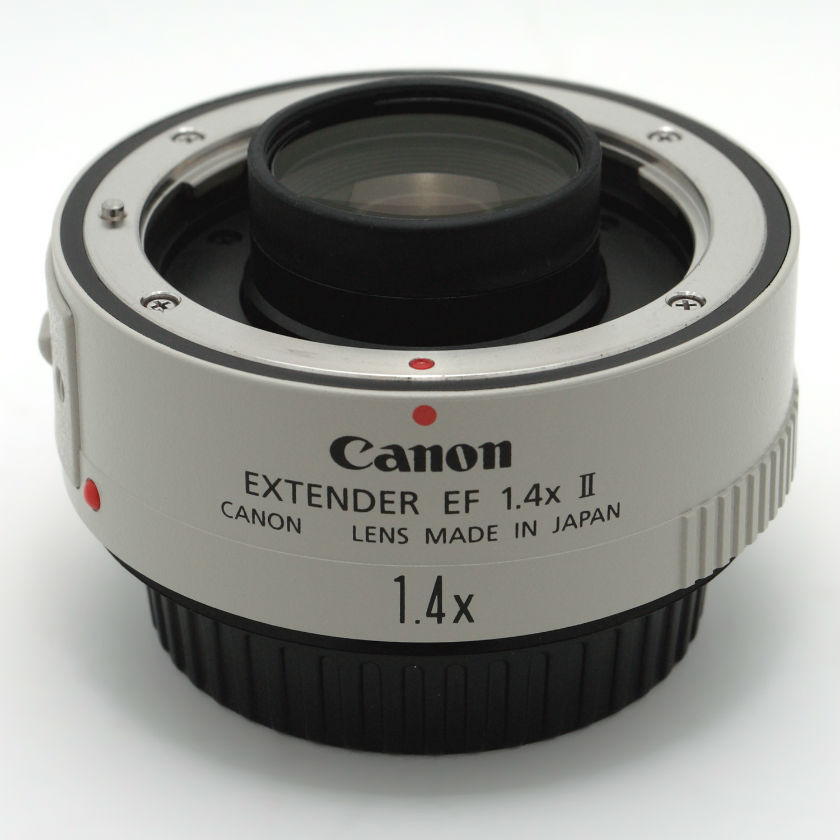
An extender is placed between the body of the camera and the lens and effectively “zooms” in the subject by the specified amount.
So we are pretty much talking about photographing deer just out past long bow hunting range with this setup. If you wanted to be able to shoot deer at longer ranges with excellent results with this camera you would need that 500 or 600 mm lens which will amp up your equipment acquisition costs a few thousand dollars! If your main goal in wildlife photography is to shoot fast-moving subjects, in general, such as birds in flight or lots of running and jumping – or other – fast action shots of wildlife, then a camera that shoots faster than the 6D would be better (the 6D shoots at 4.5 frames per second, top-end, which would seem to be fast enough, but the faster the better for really fast moving subjects!)
My Canon 60D (not the 6D but the 60D) is certainly adequate for some of this type of shooting but the Canon 7D – which I don’t have – (shoots up to 8-frames per second, fps) or the 7D Mark 2 (upgrade to the 7D in both image quality and speed of shooting – up to 10 fps with Mark 2) would certainly be better. If I had to choose, I would get the 7D Mark 2 for my main wildlife camera. But, I would still use the Canon 6D for those times when “quiet shooting” and shooting in very low light is of paramount importance. Such as when shooting within 25 yards out of a blind.
Something you might want to read up on would be about the “crop factor” some of these cameras have – the 60D, 7D, and 7D Mark 2. These cameras “crop” the image by way of the design of their smaller sensor. The result is that the image seems closer than it really is. So when using any suitable lens on these cameras the result is magnified by 60% (example a 200mm lens on a crop-factor camera effectively becomes a 320 mm lens; a 100 mm lens becomes a 160 mm lens., etc., etc.) What this means is that you can get by with a shorter lens on these cameras because your camera automatically makes it acts like a longer one – this helps with long lens expense, big time!
If you don’t need as big of a lens, then you don’t have to spend as much money (typically, lens cost goes up with lens length). So a crop-sensor camera – or crop factor camera – gives you more reach than does full-frame camera like the 6D. I won’t examine this too much more in this post. For sure there are pros and cons of each. For the wildlife shooter, a top-notch camera like the 7D Mark 2 with the built-in crop factor is hard to beat in most situations. (Some pros who must have the ultimate in top-notch image quality stay away from crop factor cameras. Also, most landscape photographers do as
Some pros who must have the ultimate in top-notch image quality stay away from crop factor cameras and just use cameras with full-frame sensors, like the EOS 6D. (There may be a slight drop in overall image quality when using a crop-sensor camera vs. one with a full-frame sensor). Also, most landscape photographers avoid crop-sensor cameras as well, because it limits their ability to use the widest angle lenses that they prefer because of that particular photography style. I hope that you are not confused by any of the “tech”
I hope that you are not confused by any of the “tech” talk above. Getting started shooting a DSLR is really not that hard. And the fun part is chasing the animals with one and bringing back great images.
It’s a constant challenge but that is where the fun lies.
Seasons? What seasons?
A refuge – who cares!
Now is as good of a time as any to get started at this. But let me warn you – shooting wildlife with a Canon is addicting! Have fun!
A little Tech Talk and some Money Saving Ideas:
Okay, let’s talk reality here. What’s this going to cost?
Full-Frame Camera:
Canon EOS 6D: $1500.00 on Amazon (this is an awesome camera for low light shooting and has a really quiet shutter too)
Crop-Sensor Cameras: (have a 1.6 X lens multiplier effect on the image)
Canon EOS 60D: $850 on Amazon (or get a used one there for under $400)
Canon EOS 40D: Not discussed in this post BUT I have one and this older camera model produces great results! It isn’t made anymore — I don’t believe –but they still sell them. I think you can get one for around $200 on Amazon. It’s a crop-sensor camera and would be an awesome starter camera. It may shoot slower and not focus as fast as the newer “kids on the block” but it’ll kick out magazine and poster quality shots if you do your part and hold it steady and shoot with a quality lens!
You can spend more on a crop sensor camera too, of course!
If I wanted a top-end wildlife shooting machine, and I do, I would save up and get the Canon EOS 7D Mark 2 (and I hope to)!
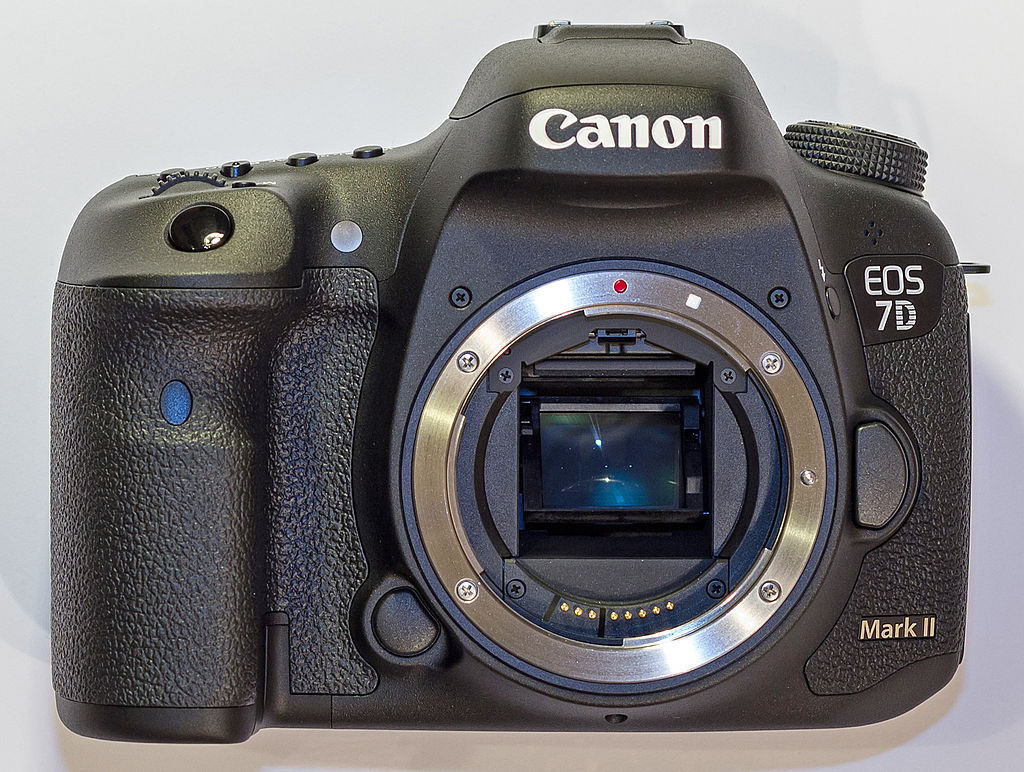
One of the top wildlife cameras available today would have to be the Canon EOS 7D Mark 2. Image courtesy By A.Savin, CC BY-SA 3.0, https://commons.wikimedia.org/w/index.php?curid=37829200
The 7D Mark 2 sells for about $1500 on Amazon and fires away at up to 10 frames per second and has super fast autofocus ability, as well. It is a fairly new camera and is a substantial upgrade of the older EOS 7D (now discontinued by Canon but you can still buy them on Amazon for about $850.). This was/is a great camera, as well, but performance-wise the newer Mark 2 version reportedly beats it in just about every respect (I don’t know, because I have not shot either one.) The choice is yours!
When it comes to getting a great wildlife lens. I would be one and done these days! That is the new Canon 100-400 mm f/4-5.6 IS 11 zoom would be my main choice if I were just gearing up. This lens is all you would really need! The reviews I have seen on this newer and updated design of the old version of this lens are pretty fantastic. This lens runs about $1700 on Amazon and you can still find the older model for about half that.
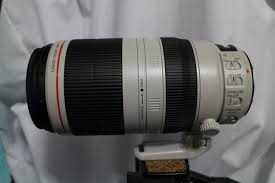
The Canon 100-400 Mark 2 is an updated of the older version and is reported to be better in all respects. This would make the ideal one-lens-does-all wildlife lens for many people!
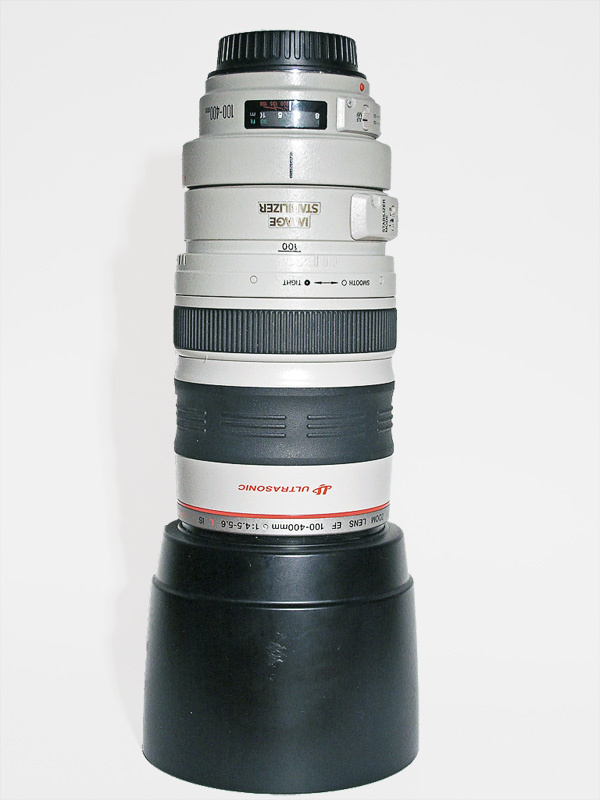
The original Canon 100-400 L Lens. Not as good as the newer version but is still a great all-around wildlife lens and has been used by pros to produce magazine quality images for years. It’s still available and is about half the cost of the new design.
Keep in mind that when it comes to saving money, it is a better idea to save on the camera and invest more into the lens!
You could opt for a used Canon 40D or 50D (not discussed but a slight upgrade of the 40D and still available used) for under $300 and one of the Canon 100-400 mm lenses just discussed.
Other Stuff:
You’ll want to start looking into tripods if you do much shooting. Although, with today’s camera’s and the internal stabilization systems that they use, it is much easier to get high-quality photographs without a tripod than it used to be.
Plus, the digital quality has gotten so good that one can shoot in very low light these days without the need for a tripod either.
I say without the need for one…that is not to say that you wouldn’t get better photographs without support — because you would! However, sneaking around the farm with a tripod is just plain cumbersome and non-fun! So, I rarely take one these days except for low-light shooting out of a blind or something similar.
A bean-bag is almost a necessity. They are inexpensive and allow you to really get a good stable shot with your camera.
Use one balanced on the edge of your half-rolled down truck or car window when you drive around a refuge or park. This will support your camera almost as well as a tripod when you have to stop suddenly to take that picture of that monster buck along the edge of the road!

